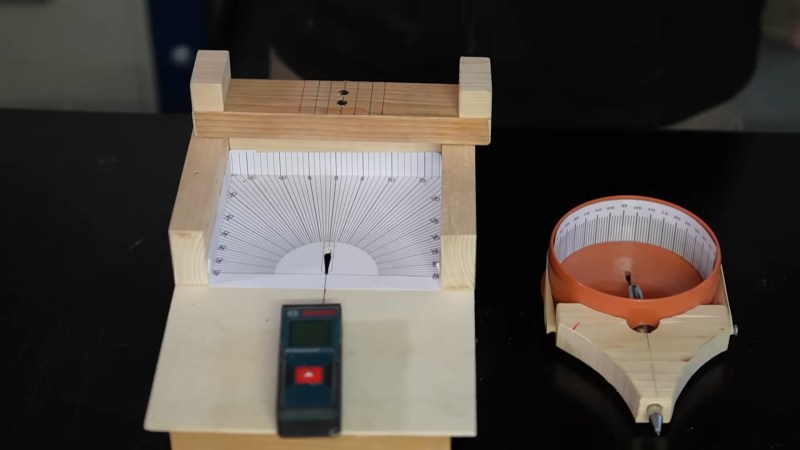Sometimes you absolutely, positively need to know the angle of the cutting edge on a knife. When you do, the best tool for the job is a laser goniometer, and [Felix Immler] shows us three different ways to build one. (YouTube)
The underlying principle of all three of these builds is to project reflected laser light off a knife blade onto a scale going from 0-45˚. [Immler] shows a basic demonstration of this concept with a hinge toward the beginning of the video (after the break). Blades with multiple bevels will reflect light to each of the appropriate points on the scale.
The simplest version of the tool is a printed PDF scale attached to a wooden box with a hole for the blade to pass through. The next uses a large pipe end cap and a drilled-out piece of wood to create a more manageable measuring tool. Finally, [Immler] worked with a friend to design a 3D printed goniometer with differently-sized adapters to fit a variety of laser pointers.
Now that you’re ready to precisely sharpen your blades, why not sharpen this guacamole bot or try making your own knife from raw ore?
















this is much better than the gonorrheameter.
Or a gonadeater!
Multisyllabic words can be difficult for some. ;) The Goniometer is a well known concept. https://en.wikipedia.org/wiki/Goniometer
@Mac , You must be a middle school teacher. Thank you.
I have a German sharpener called „Horl“. It keeps the angle at 15 or 20 degrees, does not need electricity and works perfectly.
At here are many tools which keep the angle on a blade.
This one doesn’t; it measures the existing angle.
That’s going to be useful if you don’t know what angle a blade has on it. Or if you want to verify that your sharpening technique is working.
Sure, I have one of those. But, do I know what the angle is on every blade I put in? Maybe your eye is calibrated better than mine. Just because you found no need, doesn’t mean others won’t. And, this is after all Hackaday, he hacked 3 ways to do a laser measurement…maybe some other hacker might find other uses for the technique.
It’s only mentioned in passing, but it’s super cool that he’s able to see/measure a knife blade with two bevels on it, because they make two distinct spots per side. That would be really hard to measure any other way.
I know that some chisel/plane fanatics get deep into multi/micro bevels. I’m just stoked if I’ve sharpened the tool more recently than I’ve last cut myself with it.
Measure twice,
Cut yourself
Measure twice,
Cut oneself
Wow. I’ve been looking for something like this for so long. I’m currently guessing, which isn’t the best thing ever. Thanks, now I have another useful project